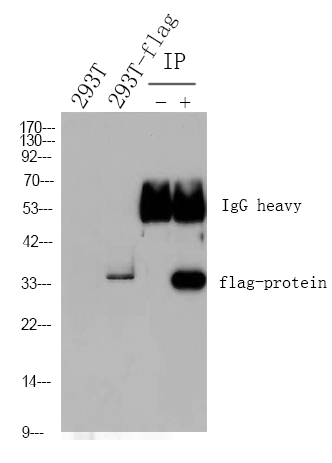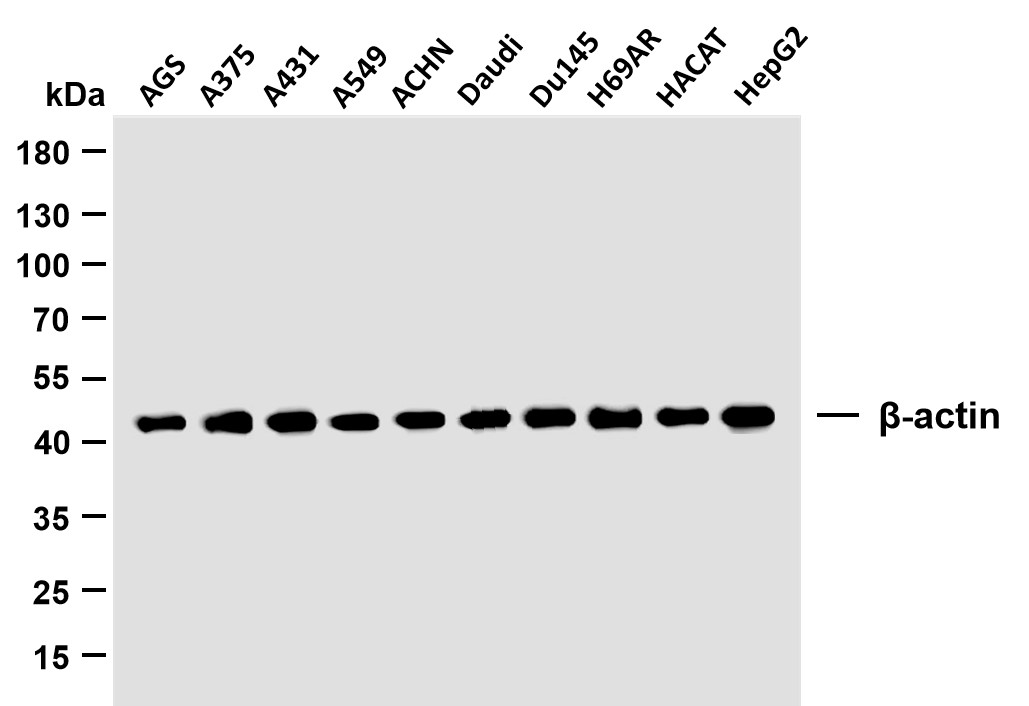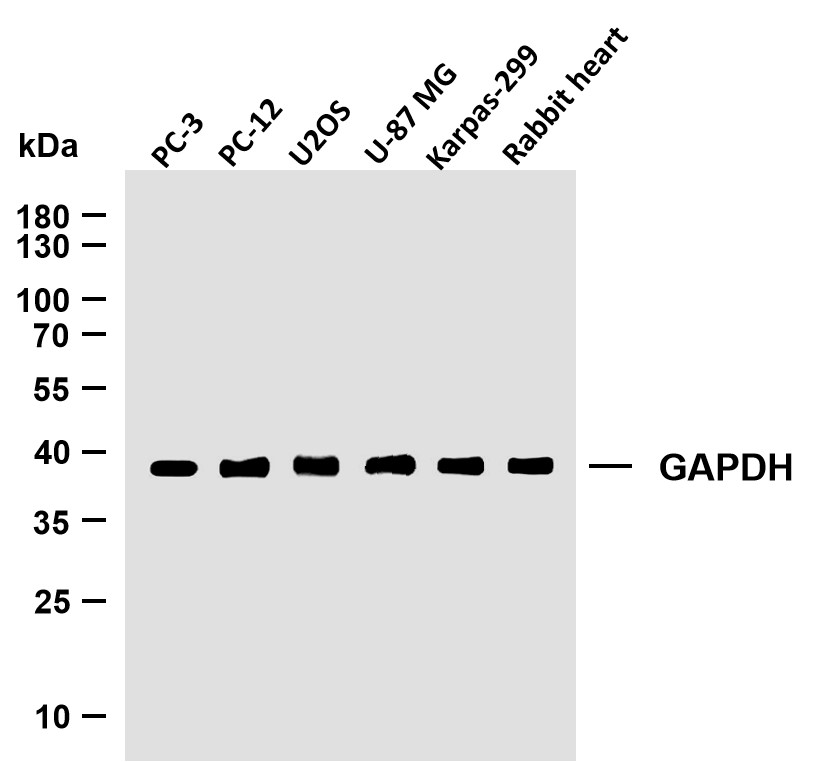
Catalog: YN2470
Size
Price
Status
Qty.
200μL
$450.00
In stock
0
100μL
$280.00
In stock
0
40μL
$150.00
In stock
0
Add to cart


Collected


Collect
Main Information
Target
CAC1A
Host Species
Rabbit
Reactivity
Human, Mouse, Rat
Applications
IHC, IF
MW
275kD (Observed)
Conjugate/Modification
Unmodified
Detailed Information
Recommended Dilution Ratio
IHC 1:50-300; IF 1:50-200
Formulation
Liquid in PBS containing 50% glycerol, and 0.02% sodium azide.
Specificity
CAC1A Polyclonal Antibody detects endogenous levels of protein.
Purification
The antibody was affinity-purified from rabbit antiserum by affinity-chromatography using epitope-specific immunogen.
Storage
-15°C to -25°C/1 year(Do not lower than -25°C)
Concentration
1 mg/ml
MW(Observed)
275kD
Modification
Unmodified
Clonality
Polyclonal
Isotype
IgG
Related Products
Antigen&Target Information
Immunogen:
Synthesized peptide derived from human protein . at AA range: 1401-1450
show all
Specificity:
CAC1A Polyclonal Antibody detects endogenous levels of protein.
show all
Gene Name:
CACNA1A CACH4 CACN3 CACNL1A4
show all
Protein Name:
Voltage-dependent P/Q-type calcium channel subunit alpha-1A (Brain calcium channel I) (BI) (Calcium channel, L type, alpha-1 polypeptide isoform 4) (Voltage-gated calcium channel subunit alpha Cav2.1)
show all
Background:
calcium voltage-gated channel subunit alpha1 A(CACNA1A) Homo sapiens Voltage-dependent calcium channels mediate the entry of calcium ions into excitable cells, and are also involved in a variety of calcium-dependent processes, including muscle contraction, hormone or neurotransmitter release, and gene expression. Calcium channels are multisubunit complexes composed of alpha-1, beta, alpha-2/delta, and gamma subunits. The channel activity is directed by the pore-forming alpha-1 subunit, whereas, the others act as auxiliary subunits regulating this activity. The distinctive properties of the calcium channel types are related primarily to the expression of a variety of alpha-1 isoforms, alpha-1A, B, C, D, E, and S. This gene encodes the alpha-1A subunit, which is predominantly expressed in neuronal tissue. Mutations in this gene are associated with 2 neurologic disorders, familial hemiplegic migraine and episodic ataxia 2. This gene also exhibits
show all
Function:
Alternative products:Additional isoforms seem to exist,Disease:Defects in CACNA1A are the cause of episodic ataxia type 2 (EA2) [MIM:108500]; also known as acetazolamide-responsive hereditary paroxysmal cerebellar ataxia (APCA). EA2 is an autosomal dominant disorder characterized by acetozolamide-responsive attacks of ataxia, migraine-like symptoms, interictal nystagmus, and cerebellar atrophy.,Disease:Defects in CACNA1A are the cause of familial hemiplegic migraine (FHM) [MIM:141500]; also known as migraine familial hemiplegic 1 (MHP1). FHM, a rare autosomal dominant subtype of migraine with aura, is associated with ictal hemiparesis and, in some families, progressive cerebellar atrophy.,Disease:Defects in CACNA1A are the cause of spinocerebellar ataxia type 6 (SCA6) [MIM:183086]. Spinocerebellar ataxia is a clinically and genetically heterogeneous group of cerebellar disorders. Patients show progressive incoordination of gait and often poor coordination of hands, speech and eye movements, due to degeneration of the cerebellum with variable involvement of the brainstem and spinal cord. SCA6 is mainly caused by expansion of a CAG repeat in the coding region of CACNA1A. There seems to be a correlation between the repeat number and earlier onset of the disorder.,Domain:Each of the four internal repeats contains five hydrophobic transmembrane segments (S1, S2, S3, S5, S6) and one positively charged transmembrane segment (S4). S4 segments probably represent the voltage-sensor and are characterized by a series of positively charged amino acids at every third position.,Function:Voltage-sensitive calcium channels (VSCC) mediate the entry of calcium ions into excitable cells and are also involved in a variety of calcium-dependent processes, including muscle contraction, hormone or neurotransmitter release, gene expression, cell motility, cell division and cell death. The isoform alpha-1A gives rise to P and/or Q-type calcium currents. P/Q-type calcium channels belong to the 'high-voltage activated' (HVA) group and are blocked by the funnel toxin (Ftx) and by the omega-agatoxin-IVA (omega-Aga-IVA). They are however insensitive to dihydropyridines (DHP), and omega-conotoxin-GVIA (omega-CTx-GVIA).,polymorphism:The poly-Gln region of CACNA1A is polymorphic: 6 to 17 repeats in the normal population, expanded to about 21 to 30 repeats in SCA6. Repeat expansion has been reported also in a EA2 family.,similarity:Belongs to the calcium channel alpha-1 subunit (TC 1.A.1.11) family.,subunit:Voltage-dependent calcium channels are multisubunit complexes, consisting of alpha-1, alpha-2, beta and delta subunits in a 1:1:1:1 ratio. The channel activity is directed by the pore-forming and voltage-sensitive alpha-1 subunit. In many cases, this subunit is sufficient to generate voltage-sensitive calcium channel activity. The auxiliary subunits beta and alpha-2/delta linked by a disulfide bridge regulate the channel activity.,tissue specificity:Brain specific; mainly found in cerebellum, cerebral cortex, thalamus and hypothalamus. No expression in heart, kidney, liver or muscle. Purkinje cells contain predominantly P-type VSCC, the Q-type being a prominent calcium current in cerebellar granule cells.,
show all
Cellular Localization:
Cell membrane ; Multi-pass membrane protein .
show all
Tissue Expression:
Brain specific; mainly found in cerebellum, cerebral cortex, thalamus and hypothalamus. Expressed in the small cell lung carcinoma cell line SCC-9. No expression in heart, kidney, liver or muscle. Purkinje cells contain predominantly P-type VSCC, the Q-type being a prominent calcium current in cerebellar granule cells.
show all
Research Areas:
>>MAPK signaling pathway ;
>>Calcium signaling pathway ;
>>Synaptic vesicle cycle ;
>>Retrograde endocannabinoid signaling ;
>>Glutamatergic synapse ;
>>Cholinergic synapse ;
>>Serotonergic synapse ;
>>GABAergic synapse ;
>>Dopaminergic synapse ;
>>Long-term depression ;
>>Taste transduction ;
>>Type II diabetes mellitus ;
>>Spinocerebellar ataxia ;
>>Morphine addiction ;
>>Nicotine addiction ;
>>Chemical carcinogenesis - receptor activation
>>Calcium signaling pathway ;
>>Synaptic vesicle cycle ;
>>Retrograde endocannabinoid signaling ;
>>Glutamatergic synapse ;
>>Cholinergic synapse ;
>>Serotonergic synapse ;
>>GABAergic synapse ;
>>Dopaminergic synapse ;
>>Long-term depression ;
>>Taste transduction ;
>>Type II diabetes mellitus ;
>>Spinocerebellar ataxia ;
>>Morphine addiction ;
>>Nicotine addiction ;
>>Chemical carcinogenesis - receptor activation
show all
Signaling Pathway
Organismal Systems >> Nervous system >> Glutamatergic synapse
Organismal Systems >> Nervous system >> Cholinergic synapse
Organismal Systems >> Nervous system >> Dopaminergic synapse
Organismal Systems >> Nervous system >> Synaptic vesicle cycle
Human Diseases >> Neurodegenerative disease >> Spinocerebellar ataxia
Environmental Information Processing >> Signal transduction >> MAPK signaling pathway
Environmental Information Processing >> Signal transduction >> Calcium signaling pathway
Reference Citation({{totalcount}})
Catalog: YN2470
Size
Price
Status
Qty.
200μL
$450.00
In stock
0
100μL
$280.00
In stock
0
40μL
$150.00
In stock
0
Add to cart


Collected


Collect
Recently Viewed Products
Clear allPRODUCTS
CUSTOMIZED
ABOUT US
Toggle night Mode
{{pinfoXq.title || ''}}
Catalog: {{pinfoXq.catalog || ''}}
Filter:
All
{{item.name}}
{{pinfo.title}}
-{{pinfo.catalog}}
Main Information
Target
{{pinfo.target}}
Reactivity
{{pinfo.react}}
Applications
{{pinfo.applicat}}
Conjugate/Modification
{{pinfo.coupling}}/{{pinfo.modific}}
MW (kDa)
{{pinfo.mwcalc}}
Host Species
{{pinfo.hostspec}}
Isotype
{{pinfo.isotype}}
Product {{index}}/{{pcount}}
Prev
Next
{{pvTitle}}
Scroll wheel zooms the picture
{{pvDescr}}



















